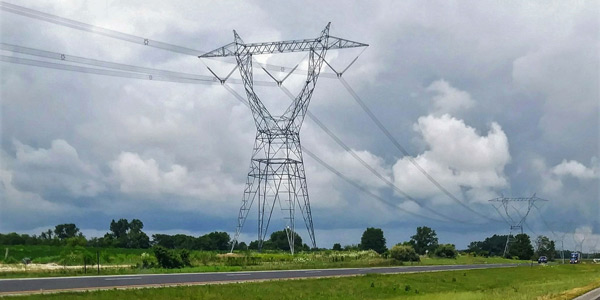By Amanda Durish Cook
MISO says it will await a FERC decision after a D.C. Circuit Court of Appeals panel vacated a series of commission orders that allowed new generators in the RTO to self-fund network transmission upgrades.
In a 2-1 vote Jan. 26, Judges David Tatel and Laurence Silberman said the commission had failed to consider the arguments of Ameren and five other transmission owners who complained the policy forced them to accept “risk-bearing additions to their network with zero return.” The TOs argued that they essentially act as “nonprofit managers” of network “appendages,” and that under the Federal Power Act and the Constitution, FERC cannot force them to construct and operate generator-funded network upgrades.
The case was handed back to FERC on remand; the court said FERC had not yet provided a suitable answer to the TOs’ complaint (16-1075).
Judge Judith W. Rogers filed a lengthy dissent supporting FERC and rejecting the petitioners’ argument that the commission’s orders require them to operate partly as a nonprofit business. “Not every regulatory decision requiring action by a regulated entity gives rise to a corresponding entitlement to a return,” Rogers wrote.
MISO spokesman Mark Brown said the RTO will continue to monitor the case, but it has no plans to act on the ruling until FERC issues an order.
“In the meantime, we are evaluating the implications for MISO and will be prepared to move forward upon final outcome,” Brown told RTO Insider.
But Ameren seeks a different, more immediate, outcome.
“Ameren looks forward to MISO filing revised tariff sheets to reinstitute the tariff provisions that were in effect immediately prior to the effective date of the vacated provisions, as expeditiously as practicable,” the company said in an email.
Under MISO’s Tariff, generation owners are responsible for funding 100% of network upgrades for projects below 345 kV and 90% for projects 345 kV and above, with the remaining 10% folded into the TO’s rate base.
The Tariff allows two methods for generation owners to fund the construction of network upgrades: either the TO fronts the capital, recovering costs over time through a charge on the interconnecting generator; or an interconnecting generator provides the capital. Under the generator funding option, the TO does not earn a return on financing network upgrades; the Tariff leaves it to the interconnecting generator to choose between the two funding options.
Originally, MISO allocated the costs equally between the generator and TO, but FERC determined that local transmission customers shouldered a disproportionate share of the cost of upgrades that stood to benefit more remote customers. FERC then issued a series of orders from 2015 to 2016 authorizing new generators to self-fund construction for network upgrades, regardless of whether grid owners wanted to finance it. The commission ruled that allowing TOs to choose a funding option — coupled with the power to levy subsequent charges to generators — might allow them to discriminate among generators.
The court, however, said the commission’s reasoning was “weak” and there was “neither evidence nor economic logic supporting FERC’s discriminatory theory as applied to transmission owners without affiliated generation assets.” It doesn’t make sense, the court said, that “FERC may compel transmission owners to operate the upgrades without an opportunity to earn a return.” The court noted that of the six petitioning MISO TOs, only one — Ameren — owns generation.
The court also found that not all network upgrade costs and risks are “baked in” when generators pay for them, and TOs must “bear liability for insurance deductibles and all sorts of litigation, including environmental and reliability claims.”
Rogers said her colleagues ignored the history behind FERC’s open access rules. “The court could hardly dispute that Ameren has ‘a competitive motive’ to favor affiliated generators over other generators. The commission addressed this circumstance in Order No. 888, and the Supreme Court thereafter observed that ‘utilities’ control of transmission facilities gives them the power either to refuse to deliver energy produced by competitors or to deliver competitors’ power on terms and conditions less favorable than those they apply to their own transmissions.’”
Relief
FERC told the court that its review was premature because the TOs could seek increased rates by filing Section 205 petitions. But the majority said that option would not provide the relief the TOs sought.
“First, FERC’s precedents do not provide compensation for several of the classes of risks that petitioners allege will accompany construction and operation of the network upgrade facilities. For example, fines and penalties for violations of mandatory reliability standards and environmental regulations are generally charged directly to the utility, not passed through to customers via rate increases. Further, FERC has stated that it takes a comprehensive view of a company, its employees and its operations when wielding its enforcement power against the utilities it governs. As such, compensation for the types of risks identified by the petitioning transmission owners may not be possible, even if proven in a future hearing.”
The court said it had no need to decide whether FERC is barred by the Federal Power Act or the Constitution from forcing TOs to construct and operate generator-funded network upgrades.
“Indeed, we should not do so until the commission has developed a record by considering that question itself,” the court said. “But we are troubled by the prospect of allowing the orders to continue in the interim.
“FERC may determine on remand that a transmission owner’s consent is required to impose generator-funded network upgrades, or that it would be unjust or unreasonable to force the transmission owners to accept increased risk with no increased return,” the court continued. “If it does not, Article III courts may subsequently require it to do so.”




